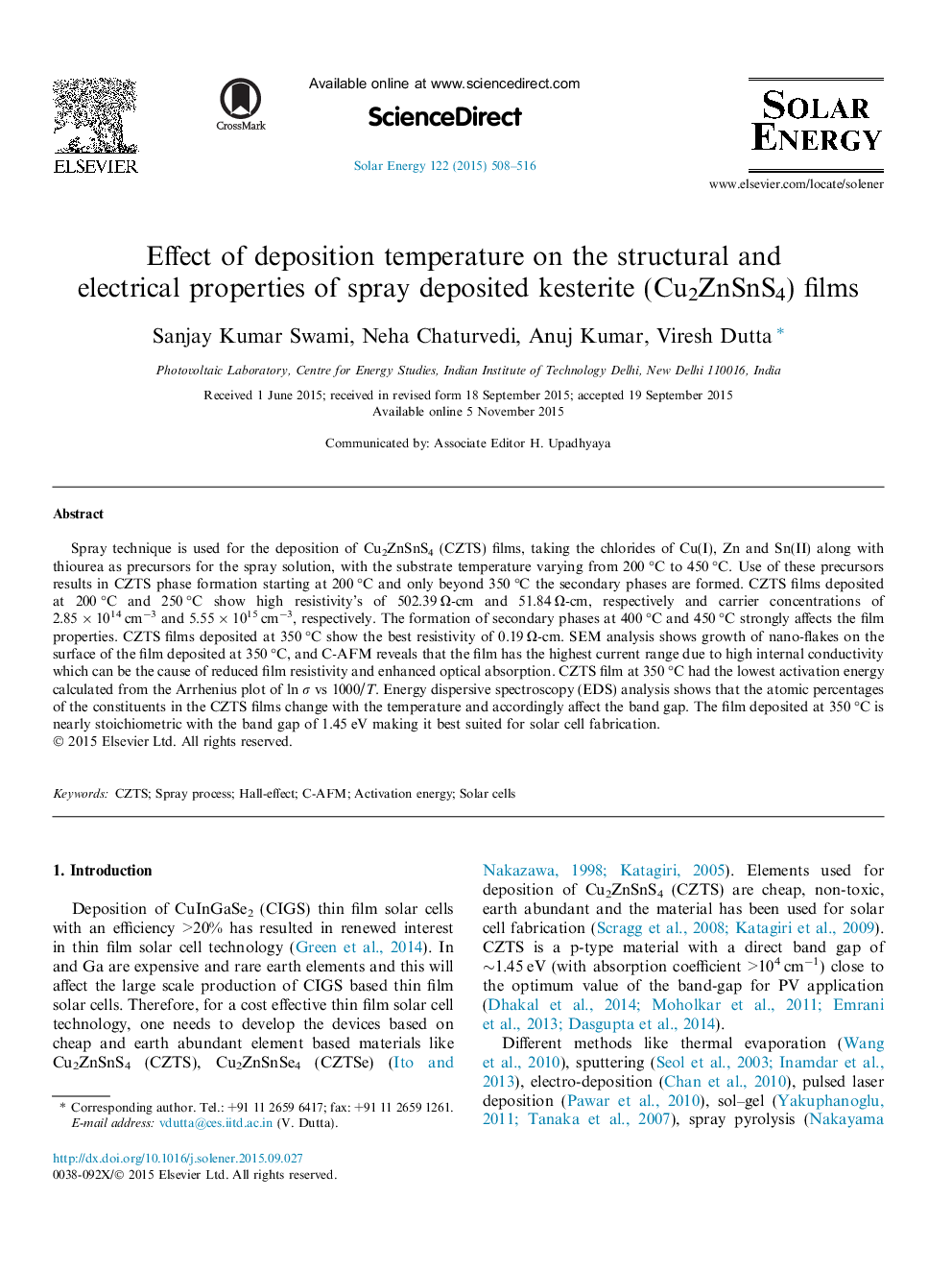| کد مقاله | کد نشریه | سال انتشار | مقاله انگلیسی | نسخه تمام متن |
|---|---|---|---|---|
| 1549603 | 1513096 | 2015 | 9 صفحه PDF | دانلود رایگان |

• Spray deposition of CZTS film at different temperature from 200 to 450 °C.
• CZTS phase formation start from 200 to 350 °C.
• CZTS film at 350 °C is nearly stoichiometric with the band gap of 1.45 eV.
• CZTS film at 350 °C has the lowest resistivity.
• C-AFM shows that average current density of K-350 film is maximum.
Spray technique is used for the deposition of Cu2ZnSnS4 (CZTS) films, taking the chlorides of Cu(I), Zn and Sn(II) along with thiourea as precursors for the spray solution, with the substrate temperature varying from 200 °C to 450 °C. Use of these precursors results in CZTS phase formation starting at 200 °C and only beyond 350 °C the secondary phases are formed. CZTS films deposited at 200 °C and 250 °C show high resistivity’s of 502.39 Ω-cm and 51.84 Ω-cm, respectively and carrier concentrations of 2.85 × 1014 cm−3 and 5.55 × 1015 cm−3, respectively. The formation of secondary phases at 400 °C and 450 °C strongly affects the film properties. CZTS films deposited at 350 °C show the best resistivity of 0.19 Ω-cm. SEM analysis shows growth of nano-flakes on the surface of the film deposited at 350 °C, and C-AFM reveals that the film has the highest current range due to high internal conductivity which can be the cause of reduced film resistivity and enhanced optical absorption. CZTS film at 350 °C had the lowest activation energy calculated from the Arrhenius plot of ln σ vs 1000/T. Energy dispersive spectroscopy (EDS) analysis shows that the atomic percentages of the constituents in the CZTS films change with the temperature and accordingly affect the band gap. The film deposited at 350 °C is nearly stoichiometric with the band gap of 1.45 eV making it best suited for solar cell fabrication.
Journal: Solar Energy - Volume 122, December 2015, Pages 508–516